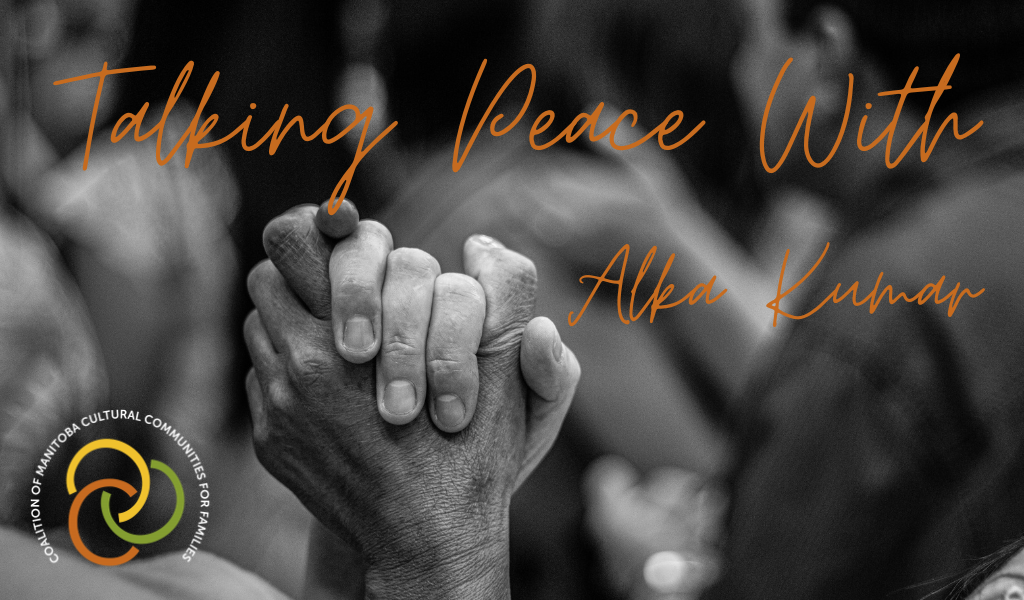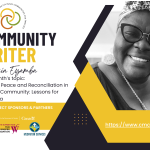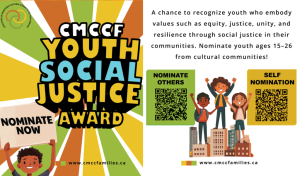
Hello dear friends, I hope you’re all ready for the rapidly approaching autumn!
Safety and well-being are so important for everyone…
Safety and well-being are often what we wish for the most-for ourselves and for our loved ones. Especially in a transnational world where people are more on the move than ever before (as per a 2020 report from the International Organisation of Migration {IOM}, an estimated 281 million people are living in a country other than their countries of birth). Either by choice or through forced displacements-arising from wars, violent international conflicts, and more recently, through climate change too-geographic distances are increasingly separating family members and friends from each other.
As a result, maybe you have noticed too, like I have, that overall levels of worry and stress being experienced by individuals, families and communities have also escalated. These anxieties obviously have a negative impact on our well-being, even on our mental health.
Building Bridges: from Conflict to Peacebuilding
In my last blog post, I mentioned the new CMCCF project, Building Bridges, (see CMCCF website for more information on this) which we see as an opportunity to have open conversations about `conflict,’ and `peacebuilding,’ with the objective of getting to a somewhat layered understanding of this concept. In case you are not aware, and have interest, you could check out websites updates that will appear regularly- about our Peace Roundtable; we welcome community voices to join online conversations and contribute their experiences and their ideas on these important matters.
Through this new blog series `Talking Peace with Alka,’ we hope that we can generate dialogue and engagement with our readers, friends, and allies, not only about conflict but also regarding strategies, for coping with stressful conflictual situations-through simply `managing’ conflicts in our lives, to `resolving’ them; being alert so we may pick up danger signs in advance, and put measures in place that help us anticipate and `prevent’ conflictual scenarios in our lives; to learning ways around sustainable solution-building that can lead to `conflict transformation.’
Can Conflict be a good thing too?
On a personal note, speaking of conflict takes me right back to some of the early classes I attended during the PhD program in Peace and Conflict Studies that I enrolled in at the University of Manitoba- soon after I moved to Winnipeg, Canada-from my city, New Delhi, India, more than fifteen years ago.
One of the first tenets about ‘conflict’ that I learned at the very outset was provocative and mind-boggling to me as it contradicted everything I had so far believed. My professor shared examples, theories and practices from this interdisciplinary social science field that demonstrated that conflict was not all bad, and that our reaction to conflict need not swing simply between fear and avoidance. Although with care, we could perhaps also engage with it.
The conflict practitioners said a lot that was positive was also embedded within any conflict situation if only we tried to see it more openly, and from multiple perspectives; this would also mean flipping the paradigm-as in, developing the ability within us to note an opportunity where only the challenge was first obvious. In other words, if we view a conflict scenario as a pathway to understanding the controversial issue more deeply, then it could be a way to listen and `actually’ hear the stories of other stakeholders who are equally invested in the conflict.
Can we think collectively, about our shared peace-goals?
Through using communication strategies to engage in respectful dialogue with the opposing party, perhaps it could be possible to work towards shared objectives? For instance, of surfacing our mutual tensions, fears and needs- and finding, along the way, that we carry enough commonalities with our adversary. Perhaps they have needs and interests that are similar to ours? Such a vision can help us work together to achieve our common peace-goals.
The truth is, often both sides are so locked into their own stories and their one-sided narratives that we refuse to look beyond our rigid mindsets and narrow self-interests. Openness to other ways of thinking, good communication strategies, including active and respectful listening to `the other;’ as well as working in collaboration, and with an empathetic ear, can be meaningful ways for adversaries to work together and achieve shared peace-goals. Ahh, maybe, dear reader, you want to remind me that I am being too idealistic here, living in too much of my own dream world…?
As this series moves forward, I will share my thoughts-and invite yours- and together we will try our best to unpack differences and similarities between the processes of dealing with conflicts that I alluded to above, I mean, managing, resolving, preventing, and transforming conflicts – including also teasing out the differences and similarities that are central to all these practices. Perhaps some conflicts in our/ your lives emerge from a clash between cultural values or they may be intergenerational.
Talking Peace
The processes inherent in `talking-peace’ are, as I understand them, importantly about starting with creating a kind-of shared understanding of what desirable peace and peacebuilding processes can look like in our everyday lives, perhaps in our relationships with our loved ones in the family; or in our neighborhoods and our communities; in our workplaces where we come together in cross-cultural teams and a different (professional) dynamic is in operation.
In moments of intense conflict and frustration, I have found it important to ask myself the key question, how important is this relationship, and to what lengths am I prepared to go to save it?
Engaging with this question often brings me clarity, and it shifts the focus- from anger and arguments to note the positive elements in the relationship and the individuals involved, rather than the issues creating the conflict situation, or my own emotions, be they frustration or a sense of hurt. Pause a moment though, dear reader, just like the others, this strategy too is just a gentle suggestion, and it will certainly not work in every situation. Unfortunately, there is no one-size-fits-all approach!
So, let’s start with `inner peace,’ shall we?
What about inner peace? Does everything not begin with oneself-be it when we feel conflicted and uncomfortable within, perhaps when anticipating a difficult conversation with someone we care about, or with a difficult colleague whose work we value? Or when we confront a bigger problem- like when the world we live in feels like it’s in a disjointed mess-with forces too big to contend with-like climate change, wars, genocide- the list is long and feels heavy.
No complicated fields of academic studies should be necessary though, to help us understand that (human) rights- i.e., the right to life and dignity, equity and inclusion, respect and safety (not being subject to violence of any kind) should indeed be universally and equally accessible to all human beings across the board.
And these rights should not be allocated (or denied) to individuals based on factors like the color of their skin, or their race or gender, class or caste; nor should these rights be linked to the region of their birth, the religion they follow or the cultural practices they observe; or to their sexual orientation. Indeed, these rights must not be tied to any specific identity markers that could make them in any sense inferior or undesirable, when compared with their fellow-beings.
I suspect this discussion will soon lead us to a full-blown conversation on the differences between `positive’ and `negative’ peace. That can be our big topic for September. Yes, it is indeed a big and important one, and needs a room of its own.
Let’s slow down for now, bite off a smaller piece, I suggest.
Maybe when the peace that resides within us goes missing from our personal lives, even at that tiny micro level, it leads to an individual experiencing a sense of isolation, exclusion, disconnection; this in turn may feel like the life-spark shut off, and we begin to experience a lack of joy, hope, or belonging.
When the inside world feels dark and out of sync, we describe that as not being at peace with ourselves. Is peace and peacebuilding then a goal we must aspire for in our personal lives and in our relationships, and if these ingredients are the glue that keeps our well-being together, what measures can we take to actualize peace? How do we make it our best-friend-forever?
Friends, I will leave you on this note, to ruminate and to reflect, till we gather again- to mark the end of summer and the beginning of another beautiful fall. The seasons keep the clock ticking for us, don’t they!
As you are aware, CMCCF has been soliciting your ideas and inviting you to share your cultural ways and traditional models of peacebuilding. Over the next few months, I urge you to follow our peace-goal like it is your guiding star! Do come up with ways to think collectively with us, around this purpose. No doubt, together we will be stronger!
In solidarity and in peace…

The views expressed in this blog post are mine, and I take full responsibility for them. We are always wanting to hear from you – please share your thoughts and feedback by completing our contact form here or by emailing hello@cmccfamilies.ca.
To learn more about our Building Bridges Project you can click: Here

 Previous Post
Previous Post Next Post
Next Post
